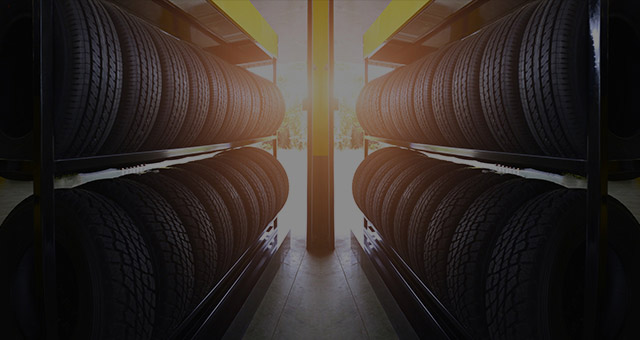Morris Tire and Alignment: Your Trusted Source for Reliable Service
Wiki Article
Tire Service: Understanding Tire Pressure Tracking Systems
Understanding Tire Stress Tracking Systems (TPMS) is a crucial aspect of keeping ideal automobile performance and safety when driving. With developments in automotive technology, TPMS has actually ended up being a basic function in modern-day cars, providing real-time information on tire stress levels. Digging much deeper into the ins and outs of TPMS, one can reveal the different elements that comprise this system and the significance of each in making certain accurate tracking. From direct to indirect TPMS systems, the landscape of tire pressure tracking is diverse, each with its unique collection of benefits and factors to consider. Stay tuned to untangle the intricacies of TPMS, from upkeep suggestions to the indisputable benefits of maintaining your tires properly blew up. mopar tire service specials.
Importance of TPMS
The importance of Tire Stress Tracking Solutions (TPMS) lies in their capability to improve vehicle safety and efficiency via real-time tracking of tire pressure levels. Keeping the proper tire stress is essential for making sure ideal handling, stopping, and overall safety and security of a car. TPMS provides motorists with immediate comments on any overinflated or underinflated tires, permitting timely modifications to be made.
Elements of TPMS
Making up different vital components, a Tire Stress Monitoring System (TPMS) works as an advanced safety feature in modern-day vehicles. The major parts of a TPMS include sensors, a control module, and a caution indicator. Sensing units are generally located in the tire valve stem or attached to the wheel assembly, where they determine tire pressure and transfer data to the control module. The control module procedures this info and triggers a warning if it identifies significantly reduced pressure in any one of the tires. The warning indication, typically a symbol on the dashboard, signals the chauffeur to inspect the affected tire or tires. Some advanced TPMS designs also display the real tire stress readings for every tire, giving drivers with real-time info to make sure optimum tire performance and security. By keeping track of tire stress continually, TPMS helps avoid mishaps, lowers tire wear, and improves fuel effectiveness, making it a critical component for vehicle safety and performance.
Sorts Of TPMS

On the various other hand, indirect TPMS counts on the vehicle's wheel speed sensing units to keep an eye on tire pressure. This system finds underinflation by comparing the rotational rates of the wheels. Indirect TPMS is less expensive than straight TPMS, as it uses existing sensing units within the lorry.
While direct TPMS uses much more exact readings, indirect TPMS is easier in layout and normally requires much less upkeep. Both systems have their limitations and advantages, and the selection in more information between them typically relies on factors such as expense, lorry make, and personal preference. Recognizing the differences between these 2 kinds of TPMS can help car proprietors make educated choices concerning tire upkeep and safety and security.
TPMS Upkeep Tips
Effective maintenance of TPMS is necessary for ensuring optimal efficiency and safety and security of your vehicle. On a regular basis evaluating the TPMS sensing units for any damage or rust is critical. Ensure that the sensors are clean and totally free from particles that can conflict with their performance. In addition, it is advisable to check the sensor batteries periodically and replace them as needed to ensure precise analyses. Conduct routine look at the tire pressure levels and compare them with the TPMS readings to guarantee they are regular. If there are any discrepancies, recalibrate the system adhering to the supplier's standards. Throughout tire turning or replacement, make sure that the TPMS elements are handled carefully to protect against any type of possible damages. Finally, if the TPMS alerting light illuminates on the dashboard, resolve the problem immediately by checking the tire stress and the general system for any mistakes. By adhering to these upkeep ideas, you can extend the life-span of your TPMS and improve the safety of your driving experience.Benefits of Correct Tire Pressure
Keeping proper tire pressure, as stressed in TPMS Maintenance Tips, is essential for gaining the numerous benefits related to optimal tire pressure degrees. One of the main benefits of keeping the correct tire stress is enhanced gas efficiency. When tires are correctly blown up, there is much less rolling resistance, causing far better gas economy. Furthermore, correct tire stress ensures even tire wear, prolonging the life expectancy of the tires and advertising more secure driving problems. With the right tire pressure, cars likewise have far better handling and grip, particularly in damaging weather conditions. This can improve general driving efficiency and security for the vehicle driver and guests. Keeping optimum tire stress can add to a smoother and a lot more comfy experience by minimizing vibrations and noise caused by underinflated tires. Finally, the benefits of proper tire stress go past simply tire durability; they encompass improved gas performance, improved security, much better car performance, and overall driving comfort.Verdict
In final thought, understanding tire stress surveillance systems (TPMS) is important for maintaining ideal tire stress and making sure vehicle security. By identifying the significance of TPMS, recognizing with its elements, recognizing the different types readily available, adhering to proper maintenance pointers, and recognizing the benefits of keeping appropriate tire visit here stress, chauffeurs can boost their driving experience and prolong the life expectancy of their tires. Correct tire stress is essential to secure and efficient lorry operation.
Report this wiki page